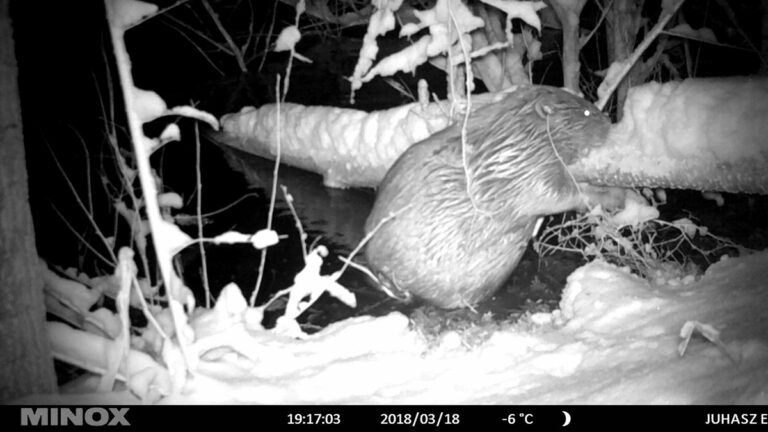The Eurasian beaver is a native species with community interest in the European Union. The species was previously extinct in Hungary, but today it is spreading intensively in the country, recolonising its former habitats. The selective foraging activity of the beaver can induce significant changes in the woody vegetation along streams and canals, influencing the competition of native and invasive plant species, as well as the structure of floodplain forests.
An extensive study was conducted by researchers working in the Institute of Ecology and Botany, which aimed at the understanding of the beavers’ foraging strategy. In their new publication, they examined the difference in the frequency of utilization between woody plant taxa, and they also explored the impact of the trunk diameter on the utilization. Based on their results, the selective foraging has a stronger direct impact on the native willow and poplar species than on other native species and on the invasive species present in the supply. Even though smaller trunks are generally preferred against the larger ones, thicker trunks of willow and poplar species can gain a high utilization ratio.
A detailed analysis of the vegetation’s response to this disturbance is still a task for the future. The changes in the floodplain vegetation following the beavers’ activity depends on the survival, sprouting, and regeneration abilities of different woody plant species. Native willow and poplar species, which are foundation species in the floodplain ecosystems, can be supported by improving the hydrological conditions and conducting landscape-level water retention.
Publication:
Juhász, E., Molnár, Z., Bede-Fazekas, Á., & Biró, M. (2023). General patterns of beavers’ selective foraging: how to evaluate the effects of a re-emerging driver of vegetation change along Central European small watercourses. Biodiversity and Conservation 1-24.
This research was supported by the National Talent Programme of Hungary and the Prime Minister's Office (NTP-NFTÖ-21-B-0288), and by the National Laboratory for Health Security (RRF-2.3.1-21-2022-00006), Centre for Ecological Research, Budapest, Hungary.



